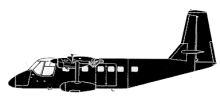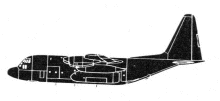Incident Overview

Description
The GAF Nomad aircraft, registered VH-ATO, owned and operated by Bayswater Road Ltd, departed Buka Airport, conducting an aerial survey under VFR. The pilot-in-command was the sole occupant. The pilot reported that when doing the pre-landing checks the landing gear failed to extend. He attempted to deploy the landing gear using the emergency system (which consists in a manual pump), but the handle of the manual pump broke after three to four pumps. The pilot decided to perform a landing in the grassy flight strip, which was about 32 metres to the right of the sealed runway centerline. There was significant damage to both landing-gear pods and the nose forward of the nose locker. The landing gear doors had significant skin damage and were not aligned with the pods. The nose cone was punctured and torn on the underside. The lower attachment points of both wings struts came into contact with the landing-gear pods and fracturing the pods side skins. The trailing skin on the left lower strut was bent. AIC comment: The landing gear system was examined including the electrical wiring. The wire to the up-lock switch on the right land gear had fractured and separated, rendering the normal landing gear extension system inoperative. Excessive force due to the resistance of the locked-up landing gear extension motor during the pumping to extend the gear manually, likely contributed to the overload failure of the handle.
Primary Cause
Failure of the landing gear system due to a broken manual pump handle and subsequent overload of the extension motor during manual extension.Failure of the landing gear system due to a broken manual pump handle and subsequent overload of the extension motor during manual extension.Share on:



